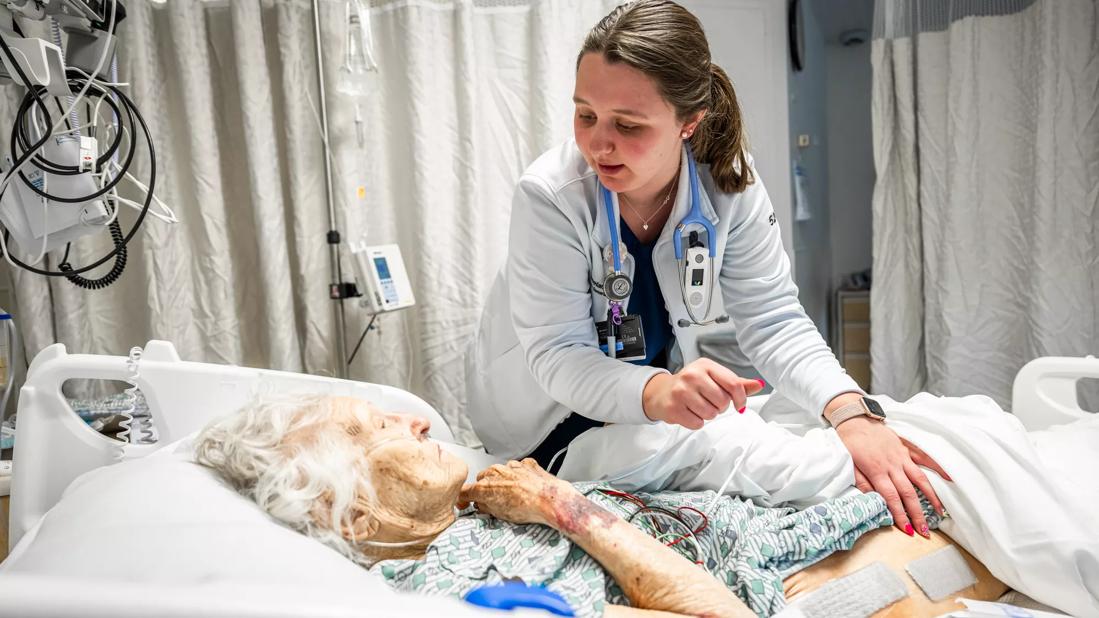Enhancing the assessment process

Emergency departments (EDs) have long been a key access point of care for older adults. But for geriatric patients with multiple chronic illnesses, cognition and mobility issues, emergency medicine’s hallmark quick evaluation of acute complaints and rapid initiation of therapy can often miss the mark.
Advertisement
Cleveland Clinic is a non-profit academic medical center. Advertising on our site helps support our mission. We do not endorse non-Cleveland Clinic products or services. Policy
The creation of a four-bed geriatric care unit (GCU) in the ED observation unit at Cleveland Clinic’s main campus is showing promise as a model for the delivery of more geriatric-friendly ED care.
Now, geriatricians and emergency specialists at Cleveland Clinic have collaborated on the development of an algorithm to identify high-risk geriatric patients to alert ED physicians through the electronic medical record when the patient they are seeing meets the hospital’s high-risk geriatric patient criteria.
“The goal is to ‘red flag’ these patients for ED providers to let them know that the patient they are treating for a sepsis infection or pneumonia or chest pain is a high-risk patient and that they should call the available geriatrician for an assessment,” says Saket Saxena, MD, of Cleveland Clinic’s Center for Geriatric Medicine, who spearheaded development of the geriatric service with Stephen Meldon, MD, Vice Chair of Cleveland Clinic’s Emergency Services Institute.
The ED nurses at the main campus GCU have received training in Geriatric Emergency Nursing Education (GENE) to identify and assess high-risk geriatric patients using screening tools recognize issues with social support, previous admissions, falls, medications, functionality, cognitive status, self-rated health, depressive symptoms, nutritional status and gait speed; additionally, the 4AT rapid screening tool for cognitive impairment and delirium is used at the time of triage.
“It’s one thing if an older patient in the ED has had a stroke or a serious infection that clearly requires hospitalization. It’s another if that patient has fallen because the medications they’re taking are making them dizzy or there are other underlying reasons,” Dr. Saxena says.
Advertisement
In a fast-paced ED where most clinicians lack formal training in the nuances of geriatric care, these subtler issues may not receive enough attention. The result can be avoidable hospital admissions, prolonged stays, multiple return trips to the ED and increased costs. Two potentially preventable geriatric syndromes, delirium in the hospital and recurrent falls, cost an estimated $83 billion yearly, according to an article in the February 2020 issue of the Annals of Emergency Medicine.
Cleveland Clinic’s GCU provides a dedicated location and safe landing place for high-risk geriatric patients who may or may not have a clear-cut emergency but who do have an array of medical and social issues that require specialized care. In the GCU, these patients receive a comprehensive evaluation by a geriatrician with expertise in sorting out the complex older patient’s needs.
“The emergency team is very focused on acute care issues, as they should be,” notes geriatric nurse practitioner Luann Capone, MSN, MPA, APRN-CNP. “Geriatrics contributes an understanding of chronic care management and helps in developing a plan to stabilize the patient and connect them with services that can keep them from bouncing back to the ED.”
A patient who falls might be experiencing a blood pressure drop or other issues contributing to poor balance, says Dr. Saxena. “We know that some of these patients will fall again and come back to the emergency room with another injury. That’s where the concept of geriatric emergency care fits in,” he says.
Advertisement
“We need to identify problems such as lack of social support, adverse drug reactions, mobility issues, cognitive issues and acute confusion or delirium as early as possible in the ED,” Dr. Saxena says. “We cannot wait until the patient has been in the hospital two or three days and then intervene.”
Over the next several months, the geriatric and emergency room teams will be working with Cleveland Clinic’s analytics group to gather data and assess the impact of early geriatric intervention in the ED on such factors as length of hospital stay, number of medications, patient satisfaction, quality of care and resource utilization. “That data will guide us and help us learn how we can improve,” says Dr. Saxena.
The GCU serves as a valuable resource for ED physicians who do not have the time to address these patients’ needs themselves, notes Dr. Meldon.
“Emergency medicine, to its credit, has increasingly embraced the realization that we must go beyond putting a band-aid on an issue,” says Dr. Meldon, citing as examples the specialty’s efforts to address problems of trauma recidivism rates and opioid addiction. “The GCU is part of that move to learn how we can best take care of the patient, not only while they’re in front of us, but also going forward.”
Advertisement
Advertisement

Multidisciplinary approach helps address clinical and psychosocial challenges in geriatric care

Effective screening, advanced treatments can help preserve quality of life

Study suggests inconsistencies in the emergency department evaluation of geriatric patients

Auditory hallucinations lead to unusual diagnosis

How providers can help prevent and address this under-reported form of abuse

How providers can help older adults protect their assets and personal agency

Recognizing the subtle but destructive signs of psychological abuse in geriatric patients

Early screening — and shorter boarding times — benefit older adults